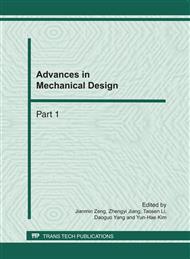p.1487
p.1492
p.1496
p.1501
p.1505
p.1509
p.1513
p.1518
p.1523
The Impact of Hybrid Ventilation on Thermal and Energy Performance in Hot and Humid Weather
Abstract:
In this paper, the simulation software was applied to evaluate a hybrid ventilated combined mechanical and naturally ventilated (atrium area to be naturally ventilated) building. In order to understand the impact of the usage of natural ventilation on thermal comfort in atrium, we utilized TAS to simulate the air temperature and air velocity distribution for the atrium. A modeled three-storey commercial office building was used as the main subject of this analysis. To determine the thermal comfort level of the central atrium, Parameters will be set in such a way that the full height windows will be 100% open. Results were tabularized to determine and analysis the output of the simulation. Recommendations will be then given based on the output performance of the building.
Info:
Periodical:
Pages:
1505-1508
Citation:
Online since:
February 2011
Authors:
Price:
Сopyright:
© 2011 Trans Tech Publications Ltd. All Rights Reserved
Share:
Citation:


